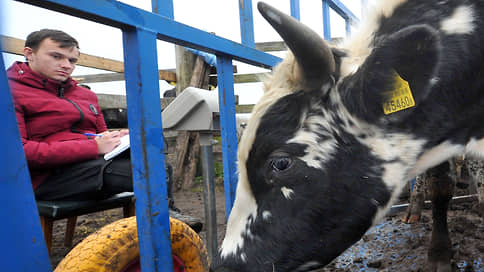State support for the agro-industrial complex is concentrated in the least profitable industries
[ad_1]

The Ministry of Agriculture is looking for ways to maintain preferential lending to the agro-industrial complex in conditions of limited budgetary capabilities and a high key rate of the Central Bank. The new mechanism, which could come into effect as early as February 10, involves the introduction of a floating interest rate – with special attention, as Kommersant has learned, will be focused on those industries where output targets have not yet been achieved. Despite the overall successes of the agro-industrial complex, there is no talk yet that the sector will be able to cope without massive government support. Refusal to compensate agricultural producers for the insufficient profitability of a number of industries, including meat and milk production, can lead to an increase in prices for their products that outstrips inflation.
The Ministry of Agriculture expects to change the mechanism of preferential lending to the agricultural sector. The adjustment was necessary due to the strict monetary policy of the Central Bank: at a low key rate, preferential loans to the agricultural sector were issued at a fixed 5% – now it was decided to make the rate on them floating. It is expected that the new rules will come into force on February 10 – they have been agreed upon with the Ministry of Finance, the Ministry of Economy and the relevant Deputy Prime Minister Victoria Abramchenko. This week, as Deputy Head of the Ministry of Agriculture Elena Fastova stated earlier, the corresponding order will be signed by Minister Dmitry Patrushev.
As Kommersant learned, the formulas for calculating the rate will be different for priority areas in which food security indicators have not been achieved and for other sectors of the agricultural sector. For the former, the rate will be calculated as 30% of the Central Bank key rate plus 2%, for the latter – as 50% of the “key” plus 2%, the Ministry of Agriculture told Kommersant. For example, at the current value of the key rate (16%) for priority areas, loans will be issued at 6.8%, for others – at 10%.
The government considers priority sectors to be those in which food security indicators have not yet been achieved. For example, although milk production in the Russian Federation at the end of 2023 amounted to 33.5 million tons (almost 0.5 million tons more than in 2022), self-sufficiency in dairy products is now about 85%, despite the fact that the food security doctrine contains a target the rate is 90%. Self-sufficiency in seeds is also gradually increasing, but achieving the target 75% is not expected until 2030.
As the Ministry of Agriculture clarified, subsidies will cover 70% of the Bank of Russia key rate for new preferential loans for priority areas of agricultural development and half for the rest. Among the priorities there are selection, genetics, dairy farming, poultry farming, egg production, baking and flour-grinding production, as well as points for the primary processing of livestock; among the “other” areas, Ms. Fastova named, in particular, reclamation and labeling.
The desire of the Ministry of Agriculture to concentrate support on priority areas of the agro-industrial complex, coupled with a decrease in demand for “other” preferential loans (due to their relative rise in price), will cause a rebalancing of the total volume of state support, concentrating the allocated funds on low-profit and unprofitable industries. Failure to do so could lead to an increase in prices for their products, such as meat and milk, outstripping inflation. Thus, according to Elena Fastova, the production of cattle meat and lamb in the Russian Federation remains unprofitable: the average profitability in these industries in recent years has been 2.5% and 3.5%, with the share of direct state support being 8% and 6%.
The Ministry of Agriculture specifically notes that when the key rate changes, the interest rate for the borrower will change. “This will be a living mechanism that will allow, in the event of a decrease in the key rate, existing loan agreements to be reviewed,” Dmitry Patrushev said at the end of January. However, in practice this is hardly likely until at least the summer of 2024, when, according to analysts, the Central Bank may begin to ease monetary policy. The head of the regulator, Elvira Nabiullina, also suggested that there is room for a rate reduction this year, but “most likely in the second half of the year.” However, analysts of the telegram channel “Hard Figures” predict that by the end of 2024 the Central Bank rate will not fall below 13% – there is no need to expect a quick return to the previous procedure for issuing preferential loans and the usual 5%.
According to Ms. Fastova, 211 billion rubles are provided for preferential lending to the agricultural sector in 2024. out of a total of 529 billion rubles, this is 40% of the entire budget stimulus for the agricultural sector. Let us remind you that this measure is considered one of the most highly effective and in demand – farmers need short-term loans throughout the entire agricultural year, so the volume of issuance has increased multiple times over the six years of the program.
Almost every year, the Ministry of Agriculture returned to the idea of increasing the rate on them to 7%, explaining that servicing already issued loans significantly limits the provision of new ones. The last attempt to adjust preferential lending was made in July 2023, but, as in previous times, it was decided to abandon the initiative following public discussion, including due to negative feedback from business associations. In the current situation, the Ministry of Agriculture has a new argument – the high probability of maintaining a strict monetary policy for the next six months.
[ad_2]
Source link






